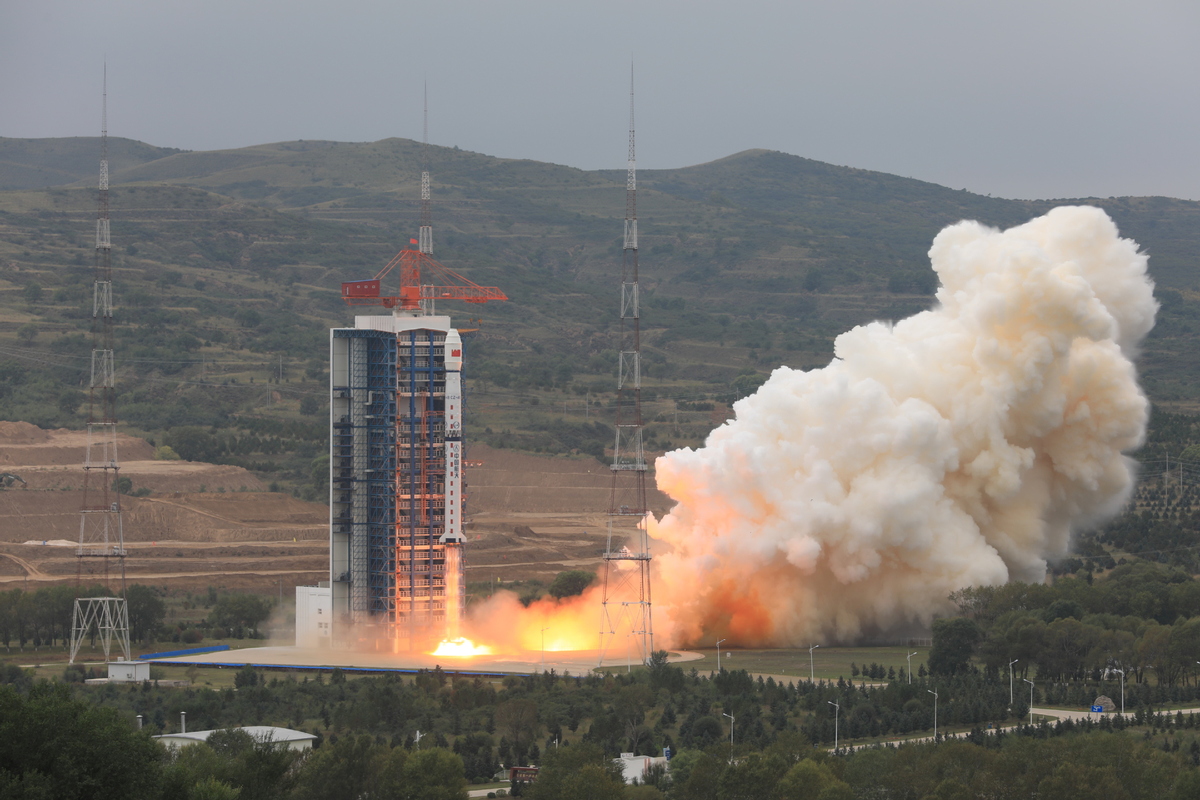Nation's first polar observation satellite launched


China put its first polar observation satellite in space on Thursday to strengthen the nation's polar research capability.
BNU-1, also known as the Ice Pathfinder, was launched atop a Long March 4B carrier rocket at the Taiyuan Satellite Launch Center in Shanxi province at 11:26 am, together with an optical remote-sensing satellite and a micro experimental satellite, according to China Great Wall Industry Corp, the satellites' launch service contractor.
The mission marked the 310th launch of China's Long March carrier rocket series.
Developed and constructed by Aerospace Dongfanghong Development in Shenzhen of Guangdong province, BNU-1 weighs 16 kilograms and carries three experimental payloads-a multispectral camera, a high-resolution visible-light camera and an automatic identification system receiver, a device for ship identification.
The satellite is tasked with observing and monitoring the climate and environment in the Antarctic and Arctic. It is expected to work in a sun-synchronous orbit more than 730 km above Earth for up to two years, China Academy of Space Technology, parent of Aerospace Dongfanghong Development, said in a statement.
After a period of in-orbit tests, it will be handed over to the Joint Center for Polar Research of Chinese Universities to begin its service.
That service will enable China to put an end to its heavy reliance on Western companies' satellites for images and data of polar regions, extensively bolstering the nation's polar and global environmental research, the academy said.
It noted that the satellite can track the ice movement along shipping routes and combine that data with passing ships' information, received via the mounted automatic identification system receiver, to analyze collision hazards and then autonomously prepare navigation routes.
BNU-1 is equipped with a de-orbiting panel that will unfold when the satellite runs out of power to enable the spacecraft to leave the orbit, and thus avoid becoming space debris, according to the academy.
Research and development of BNU-1 was begun in February 2018 by researchers at Beijing Normal University's College of Global Change and Earth System Science who called for space-based assets for their work.
In the past, polar regions' data available to Chinese scientists was mainly acquired by Chinese ships and polar stations, but information from those sources has long been limited by tough natural conditions and the inaccessibility of many areas, experts said.
- Beijing court launches a groundbreaking initiative by appointing 21 retired judges as mediators
- Former legislator of Fujian sentenced to death
- Tracing Xiamen's growth from Internet All-media Tour
- Defense Ministry denies naval task force directed at Australia
- China's flu cases projected to peak soon
- New CAS academicians vow to leverage research to drive economic development



































